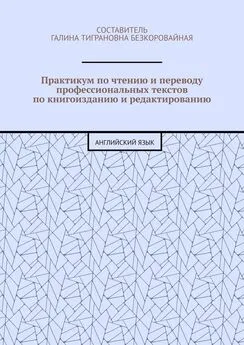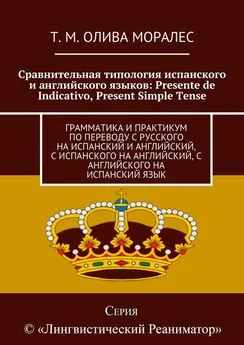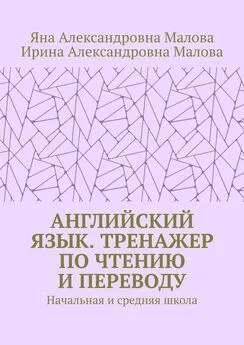Е. Казакова - Практикум по чтению и переводу профессиональных текстов по книгоизданию и редактированию. Английский язык
- Название:Практикум по чтению и переводу профессиональных текстов по книгоизданию и редактированию. Английский язык
- Автор:
- Жанр:
- Издательство:неизвестно
- Год:неизвестен
- ISBN:9785449879455
- Рейтинг:
- Избранное:Добавить в избранное
-
Отзывы:
-
Ваша оценка:
Е. Казакова - Практикум по чтению и переводу профессиональных текстов по книгоизданию и редактированию. Английский язык краткое содержание
Практикум по чтению и переводу профессиональных текстов по книгоизданию и редактированию. Английский язык - читать онлайн бесплатно ознакомительный отрывок
Интервал:
Закладка:
4. Complex sentences and multiple phrases make the reading tougher. Make it easy for your readers to find the subject and verb of each sentence, so they get the point fast.
5. Cut redundancies. Too much repetition in your texts speaks boring or «talking down» to your readers
6. Don’t use pompous words to try to impress your reader.
7. Use the shortest, simplest, most well-know word.
8. Make your texts sculptured and painted like a fine work of art. Your word choices do make a difference – both in commercial acceptance as well as audience understanding.
5. Give the English equivalents from the text given above:
Статьи привлекут читателя на веб-сайт; коллеги по бизнесу; временами; находящийся под рукой, чтобы отредактировать статью; с небольшой помощью; уловить суть статьи; проверить количество слогов; избегать использование страдательного залога; заставить зевать; затруднить чтение (сделать его труднее); легкие для чтения намеки; быстро понять суть статьи; зрение, слух, чувства; деньги сами по себе не мотивируют; сократить повторы; хорошо известные слова; произвести впечатление на читателя; использовать самые короткие слова, в коммерческом отношении; произведение изящного искусства; понимание аудитории, редактирование самого себя.
6. Fill in the gaps with the words from the text:
1) Knowing these __________, you want to create and submit as many excellent texts as you can.
2) __________ of adjectives. Instead of saying, She is a super-intelligent person,» you could say, «She’s a genius».
3) Keep the __________ and verb as __________ together as possible.
4) Put your point at the end of a sentence, a paragraph, or chapter for __________.
5) Make your texts __________ and painted like a __________ of art.
7. Translate into English:
1. Статьи привлекут читателей на ваш сайт, если вы последуете ряду советов.
2. Не используйте сложные предложения, чтобы не заставлять читателей зевать.
3. Сократите повторы, которые затрудняют чтение статей.
4. Облегчите структуру предложения, чтобы читатель мог быстро найти подлежащее и сказуемое и сразу же понять основную мысль.
5. Можно привлечь ваших коллег к редактированию, но проще редактировать самому, если следовать определенным советам.
6. Следует использовать самые короткие, простые и общеизвестные слова.
7. Выбор слов будет содействовать наилучшему пониманию и коммерческому успеху статей.
8. Compose the dialogues on the topics:
1. How do you understand the statement: «Make your texts sculptured and painted like a fine work of art»
2. What is the main advice on the self-editing which you have found in the text.
Unit 3
1. Read and learn the following words and expressions:
1. to step through – пройти через
2. account – отчет
3. to illuminate – проливать свет, освещать
4. creativity – творческие способности, творческий потенциал
5. mortality – смертность
6. transience- быстротечность, мимолетность
7. narrative – повествовательное
8. nonfiction – документальное произведение
9. fascinating – захватывающий
10. rivalry – соперничество, конкуренция, соревнование
11. ambition – честолюбие
12. facet – грань, аспект
13. dazzling – ослепительный
14. juicy – интересный
15. to grapple – пытаться преодолеть
16. challenge – вызов, проблема
17. to limber up- делать разминку
18. scene-setting – построение сцены
19. posturing-маневрирование
20. straightforward – прямой, прямолинейный
21. to thread – вплетать, проводить красной нитью
22. to dispense – освобождать
23. to fortify – поддерживать, защищать от
24. flaws – недостатки
25. pretty – привлекательный
26. to shy away – увиливать, отказываться
27. herd – стадо
28. to snatch away – убивать
29. to struggle through – пробиваться через
30. to scribble – небрежно писать, писать как курица лапой
31. margin – поле страницы
32. hype – рекламная шумиха
33. buzz – слухи шумиха
34. substance – сущность
35. insight – проникновение в сущность, понимание
2. Read the text below and retell it:
http://www.publishersweekly.com/pw/by-topic/columns-and-blogs/soapbox/article/21359-editing-from-the-inside.html
EDITING FROM THE INSIDE
TO BE A GOOD EDITOR, IT HELPS TO THINK LIKE A WRITER.
by Jake Morrissey – Publishers Weekly, 7/18/2005
I learned a valuable lesson about editingwhen I stepped through the publishing looking-glass and became an author: It’s just as important for an editor to understand the author’s writing process as it is to understand the words on the page.
Two manuscripts taught me this. The first was Freud’s Requiem by Matthew von Unwerth. Subtitled Mourning, Memory, and the Invisible History of a Summer Walk (and published by Riverhead on July 7), it’s the account of Sigmund Freud’s investigation into the connections between creativity and mortality in his 1915 essay «On Transience.» It illuminates a time in Freud’s life few know much about, and introduces readers to a fascinating world of ideas and the people who create them.
The second was my own book, The Genius in the Design (published by Morrow last March). Like the Freud book, it’s narrative nonfiction, the story of the decades-long rivalry between two of Italy’s great 17th- century architects, Gianlorenzo Bernini and Francesco Borromini. (Think Amadeus with architects.)
I began editing Matt’s manuscript as I was finishing Genius , and was struck by the similar ambitions of our books. Each illuminates a facet of cultural history through great men. And each focuses on what these men accomplished: in Freud’s Requiem , provocative ways of thinking about creativity; in Genius , dazzling buildings and the invention of the Baroque. Both books demonstrate that great, juicy stories can be found where history, culture and personality meet.
The more of the Freud manuscript I edited, the more I realized that Matt and I had grappled with the same challenges. Among them was finding the narrative in abstract ideas. I told Matt to find the people in the ideas he was writing about. One of my notes suggested, «You’re addressing some pretty abstract ideas here… If you can thread the lives of these three through the manuscript, the book will be both more dramatic on a human level and more psychologically engaging.» I had made a similar mistake myself, in one chapter describing the current appearance of a Roman street instead of the reasons why Borromini was walking down it in the first place.
In addition, Matt’s writing in his early drafts was too cautious. He needed to limber up his prose. I suspected he knew this, as I had when I submitted my manuscript and my editor noted that my complicated scene-setting «feels like posturing to me and it’s not necessary.»
To get Matt to focus on simplifying his language and sentence structure, I told him that «the more theoretical the ideas you want to convey, the more straightforward your prose should be.» I wonder if dispensing such advice would have occurred to me before I had written my own book.
As I edited, I tried to keep in mind that editors too often search only for the flaws in a manuscript. We can be like lions trying to snatch away a herd’s weaker antelopes when sometimes it’s just a joy to watch them run. An occasional positive comment scribbled in the margins can fortify an author during the revision process: a simple «nice» or a more theatrical «Bravo» can help enormously. This is a lesson I learned as I struggled through my own rewrite, where my editor noted on page 42, «Jake, this is wonderful writing.» (I’m thinking of having the page laminated.)
That doesn’t mean that as an editor I shied away from asking questions or requesting revisions. When I thought a point was muddy or that Matt needed to be more specific – I once asked him to be «less psychiatric» – I said so. But I never forgot that this book should sound like him, not me. These were his ideas, not mine; the gold he’d mined was his. It was my job to polish it so that it shone as brightly as it could.
In a publishing climate where hype seems more important than content and buzz more desirable than substance, it’s easy to forget books are still written the way Edith Wharton, F. Scott Fitzgerald and Ernest Hemingway wrote them: word by word, insight by insight. And no matter which side of the desk I sit on, it helps to remember that all of these writers benefited from having an editor who helped them find the best books in them.
Comments:
Morrissey is an editor at Riverhead Books and the author of The Genius in the Design: Bernini, Borromini, and the Rivalry that Transformed Rome.
Freud’s Requiem
The Genius in the Design
3. Translate the following sentences into Russian:
1. To be a good editor, it helps to think like a writer.
2. It’s just as important for an editor to understand the author’s writing process as it is to understand the words on the page.
3. It illuminates a time in Freud’s life few know much about, and introduces readers to a fascinating world of ideas and the people who create them.
4. I told Matt to find the people in the ideas he was writing about. One of my notes suggested, «You’re addressing some pretty abstract ideas here… If you can thread the lives of these three through the manuscript, the book will be both more dramatic on a human level and more psychologically engaging.»
5. We can be like lions trying to snatch away a herd’s weaker antelopes when sometimes it’s just a joy to watch them run.
6. This is a lesson I learned as I struggled through my own rewrite, where my editor noted on page 42, «Jake, this is wonderful writing.» (I’m thinking of having the page laminated.)
Читать дальшеИнтервал:
Закладка:










